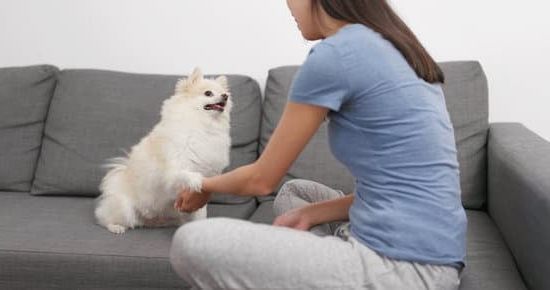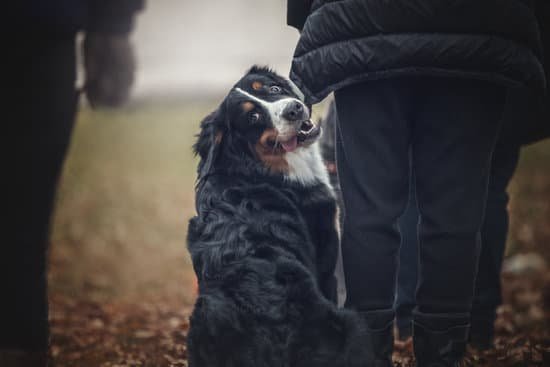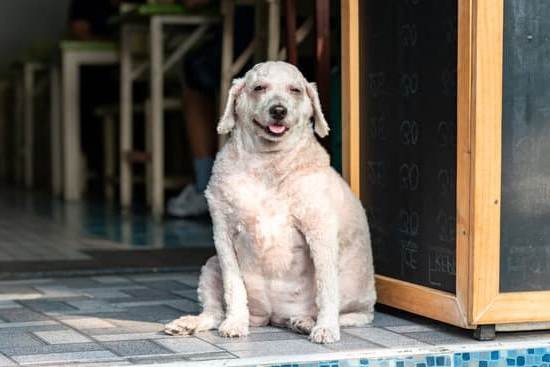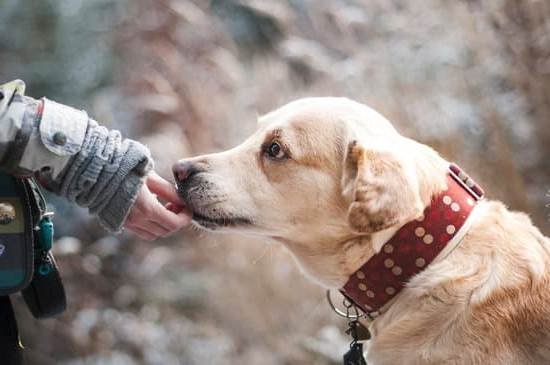Are you tired of cleaning up after your dog’s indoor accidents? Training your dog to pee on pads can be the solution you’ve been looking for. In this article, we will explore the benefits of training dogs to use pee pads and provide you with a comprehensive guide on how to successfully potty train your canine companion.
Potty training can be a challenging task for dog owners, but with the right approach, it is definitely achievable. By learning how to train dogs to pee on pads, you can provide your pet with a designated area for relieving themselves indoors, reducing the need for frequent outdoor trips or preventing messy accidents inside your home.
In the following sections, we will discuss the key components of successful potty training, including choosing the right pee pads for your dog, setting up a potty training area in your home, establishing a routine, using positive reinforcement techniques, handling accidents, transitioning from pee pads to outdoor potty training, and troubleshooting common challenges.
Whether you are a new puppy owner or have an older dog who needs some re-training, these steps will help you achieve success in potty training your furry friend.
Choosing the Right Pee Pads for Your Dog
When it comes to training your dog to pee on pads, choosing the right pee pads is crucial for success. There are a few key factors to consider when selecting the appropriate pee pads for your dog: size, material, and absorbency.
Size Matters
The size of the pee pad you choose will depend on the size of your dog. For smaller breeds, a standard 22×23 inch pad may be sufficient. However, larger dogs will require a bigger surface area to ensure proper coverage. Always consider your dog’s size and how much space they need to comfortably relieve themselves on the pad.
Material and Absorbency
Pee pads come in a variety of materials, including paper, cloth, and synthetic materials. Consider your dog’s habits and preferences when it comes to material. Some dogs may prefer a softer cloth-like texture while others may not have a preference. In terms of absorbency, look for pads with multiple layers that can lock in moisture and control odors effectively.
Environmental Impact
Another factor to consider when choosing pee pads is their environmental impact. If you are concerned about sustainability, look for eco-friendly options that are biodegradable or made from recycled materials. This way, you can potty train your dog while minimizing your carbon footprint.
By carefully considering these factors when choosing pee pads for your dog, you can set them up for successful potty training and create a comfortable environment for them to relieve themselves indoors.
Setting Up the Perfect Potty Training Area in Your Home
When it comes to training your dog to pee on pads, one of the key factors for success is setting up the perfect potty training area in your home. This designated area will serve as the consistent location where your dog can go to relieve themselves, making it easier for them to understand and follow through with their training.
Choosing the Right Location
The first step in setting up the perfect potty training area is choosing the right location in your home. This area should be easily accessible to your dog, but also somewhat secluded for privacy. Consider a spot that is away from high-traffic areas in your home, but still within close proximity for quick and easy access.
Creating a Comfortable Space
Once you’ve chosen the location, it’s important to create a comfortable space for your dog to do their business. Whether you choose to use a designated litter box or specific pee pads, make sure they are placed in an area that is easily accessible to your dog without creating obstacles or barriers.
Minimizing Distractions
Another important aspect of setting up the perfect potty training area is minimizing distractions. Keep this space free from loud noises, excessive foot traffic, or other pets that may cause distractions while your dog is trying to do their business. Creating a calm and peaceful environment will help your dog feel more at ease and focused during their potty training sessions.
Establishing a Potty Training Routine
Consistency is crucial when it comes to potty training your dog to use pee pads. Dogs thrive on routine, so setting up a consistent schedule for potty breaks will help them understand where and when they should do their business.
Start by taking your dog to the pee pad area first thing in the morning, after meals, playtime, and before bedtime. By consistently bringing them to the same spot at the same times every day, you are reinforcing the behavior you want from them.
During the initial stages of potty training, it’s important to keep a close eye on your dog’s behavior and body language. If you notice signs that they may need to go, such as sniffing around or circling in a specific area, immediately bring them to the pee pad. Anticipating when your dog needs to go and guiding them to the designated area will help reinforce the desired behavior.
In addition to setting a regular schedule for potty breaks, be sure to give your dog plenty of praise and rewards every time they successfully use the pee pad. Positive reinforcement goes a long way in encouraging good potty habits, so make sure to shower your furry friend with affection and treats when they do their business in the right place.
By being consistent with both schedule and positive reinforcement, you can effectively train your dog to pee on pads in no time.
Positive Reinforcement Techniques
When it comes to potty training your dog to use pee pads, positive reinforcement can be one of the most effective techniques. By rewarding your dog for using the pee pad, you are encouraging and reinforcing the desired behavior. This can help make the potty training process more successful and enjoyable for both you and your furry friend.
One of the most popular methods of positive reinforcement is using treats. When your dog successfully uses the pee pad, immediately praise them and offer a small, tasty treat as a reward. This will create a positive association with using the pee pad and encourage them to repeat the behavior in the future. It’s important to choose treats that your dog loves and finds motivating, as this will increase their willingness to use the pee pad.
In addition to treats, verbal praise and affection can also be powerful forms of positive reinforcement. Dogs thrive on their owners’ approval and attention, so be sure to shower them with praise when they use the pee pad correctly.
You can use a happy tone of voice and petting or cuddling as additional rewards for good behavior. Remember that consistency is key when it comes to positive reinforcement – always reward your dog immediately after they use the pee pad to reinforce the connection between behavior and reward.
| Reinforcement Method | Effectiveness |
|---|---|
| Treats | Highly effective; creates a strong motivation |
| Verbal praise and affection | Effective; strengthens bond with owner |
Dealing With Accidents
Accidents are an inevitable part of the potty training process, especially when you are training your dog to pee on pads. It’s important to remain patient and stay consistent with your training routine even when accidents occur. Here are some key tips for dealing with accidents and maintaining a positive attitude during the potty training process:
1. Be prepared with the right cleaning supplies: Accidents happen, so it’s essential to have the necessary cleaning supplies on hand to quickly clean up any messes. Invest in a good enzymatic cleaner specifically designed for pet stains to effectively remove odors and discourage your dog from repeating the accident in the same spot.
2. Avoid punishment: When accidents occur, it’s important to resist the urge to scold or punish your dog. Punishment can create fear and anxiety, potentially hindering the potty training progress. Instead, focus on positive reinforcement and redirection towards using the pee pad.
3. Stay consistent and patient: Potty training takes time, so it’s crucial to maintain a patient and understanding attitude throughout the process. Remember that each dog learns at their own pace, and accidents are a normal part of the learning curve.
By being prepared with cleaning supplies, avoiding punishment, staying consistent, and maintaining patience, you can effectively handle accidents during the potty training process and continue guiding your dog towards successful use of pee pads.
Transitioning From Pee Pads to Outdoor Potty Training
Training your dog to use pee pads can be a convenient solution, especially for pet owners who live in apartments or have busy schedules. However, many pet owners eventually want to transition their dogs from using pee pads to going outside for potty breaks. This transition can be achieved with patience, consistency, and positive reinforcement. Here are some tips for successfully transitioning your dog from pee pads to outdoor potty training:
1. Gradually move the pee pad closer to the door: Start by moving the pee pad closer to the door that leads outside. This will help your dog associate the act of eliminating with being closer to the outdoors.
2. Take frequent outdoor potty breaks: Once the pee pad is near the door, take your dog outside frequently for potty breaks. This will help them understand that going outside is also an acceptable place for elimination.
3. Use positive reinforcement: Just like with pee pad training, use positive reinforcement when your dog goes potty outside. Praise them and offer treats as a reward for using the outdoor space.
4. Be patient and consistent: Transitioning from pee pads to outdoor potty training may take time, so be patient with your dog. Consistency in taking them outside at regular intervals will help reinforce this new behavior.
Remember that every dog is different, so it’s important to tailor your approach based on your pet’s individual needs and behaviors. With time and dedication, most dogs can successfully make the transition from using pee pads to outdoor potty training.
Troubleshooting Common Potty Training Challenges
Potty training your dog to use pee pads can sometimes come with challenges, but with the right tips and techniques, you can overcome these obstacles and achieve success. One common challenge is dealing with a dog that refuses to use the pee pad consistently.
In this case, it’s essential to revisit the basics of potty training and ensure that you are providing a suitable environment for your dog to do its business. This includes choosing the right pee pads, setting up the potty training area correctly, and establishing a routine.
Another challenge that dog owners may encounter is their pet having accidents outside of the designated potty area. To address this issue, it’s important to monitor your dog closely and keep it within the designated potty area during training sessions. You may also need to revisit positive reinforcement techniques and provide extra encouragement when your dog uses the pee pad correctly.
Additionally, some dogs may show signs of resistance or anxiety when transitioning from pee pads to outdoor potty training. This can be overcome by gradually introducing your dog to outdoor potty areas while maintaining consistency in routines and rewards. By addressing these common challenges with patience, consistency, and positive reinforcement, you can successfully train your dog to use pee pads and achieve effective potty training results.
| Common Challenges | Tips for Success |
|---|---|
| Inconsistent use of pee pad | Revisit basics of training; Provide suitable environment; Establish routine |
| Accidents outside designated area | Monitor closely; Extra encouragement; Positive reinforcement |
| Resistance to outdoor potty training | Gradual transition; Maintain consistency; Positive reinforcement |
Conclusion
In conclusion, training your dog to pee on pads can be a challenging but ultimately rewarding process. By understanding the benefits of this method, choosing the right pee pads, and setting up a proper potty training area in your home, you are laying the foundation for success. Remember that consistency is key when establishing a potty training routine, and positive reinforcement techniques can go a long way in encouraging your dog to use the pee pad.
As you navigate through the process, be prepared to deal with accidents and have patience as your dog learns. Properly cleaning up accidents and staying patient will help create a positive learning environment for your pet. Additionally, transitioning from pee pads to outdoor potty training may also be part of the journey, so be prepared for that shift.
Finally, troubleshooting common potty training challenges and celebrating your dog’s success along the way will help you maintain their good habits. With dedication and commitment to the training process, you will set your dog up for long-term potty training success. Remember to celebrate every milestone achieved by your furry friend as you both work towards maintaining their good habits.
Frequently Asked Questions
How Do I Get My Dog to Pee on a Pad?
To get your dog to pee on a pad, you can start by placing the pad in a designated area and leading your dog to it regularly. When your dog sniffs or shows interest in the pad, give them positive reinforcement and treats.
Consistency is key – take your dog to the pad first thing in the morning, after meals, and before bedtime. Gradually decrease the size of the pads as your dog gets used to using them.
What Will Attract Dog to Pee Pad?
There are a few things that can attract a dog to a pee pad. One effective method is to use pheromone sprays or drops designed to attract dogs to specific areas for elimination.
You can also try using positive reinforcement such as treats or praise every time your dog successfully uses the pee pad. Additionally, some dogs may be attracted to certain scents, so experimenting with different scents on the pad might help.
How Long Does It Take to Pee Pad Train Your Dog?
The time it takes to train your dog to use pee pads can vary depending on several factors including age, breed, and previous training experiences. On average, it may take about 2-4 weeks of consistent training for your dog to reliably use pee pads.
However, some dogs may pick it up faster while others may take longer. It’s important to be patient and consistent with the training process in order for it to be successful.

Welcome to the blog! I am a professional dog trainer and have been working with dogs for many years. In this blog, I will be discussing various topics related to dog training, including tips, tricks, and advice. I hope you find this information helpful and informative. Thanks for reading!





